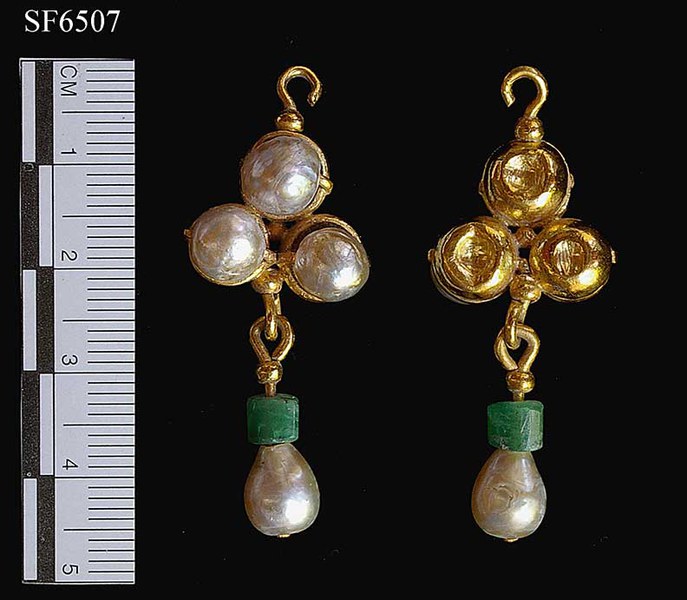
Excavations at Amorium in central Phrygia began in 1988 under the direction of Professor R. Martin Harrison. The main objective of the project has been to investigate the size and nature of the Byzantine city (6th–11th century), which was one of the largest and most important in Anatolia during the early Middle Ages. Some remarkable individual finds have been made, shedding new light on the economic and social history of the Byzantine inhabitants of Amorium. In addition to excavation, there is an extensive program of conservation, aimed at the long-term preservation of the site and its monuments.
In 2005, excavations were carried out in three sectors of the site, two in the Lower City and one in the western necropolis. Work continued in the area known as the Lower City Enclosure and exposed the well-preserved remains of two grape-treading vats, both dated to the earlier part of the Dark Ages (7th–8th century). The walls of one of these vats had been dismantled during the middle Byzantine period, when new structures were constructed in the same area, but its floor was left largely intact and so was found complete with its stone spout and drainage basin still in situ. The other vat, however, was preserved to a considerable height and showed that it had been converted to store grain before it was destroyed by fire. Next to the same installation, a stretch of unpaved street was exposed. Its surface was also covered with layers of ash and roof collapse. From its size and orientation, the street would seem to suggest that some elements of the late Roman city plan had survived until the 9th century. In conjunction with these exciting developments in the Enclosure, further efforts were made to understand better the area's complex stratigraphy and the phasing of its numerous structures. A detailed plan, color-coded for clarity, was drawn up and scrupulously checked on site. This had the added benefit of confirming the presence of a widespread and consistent destruction layer that should probably be associated with a major historical event, namely the siege and sack of Amorium in 838.
Work also continued in the Lower City Church. To the north of the main body of the church an entire baptistry was excavated at its western end. This formed part of the original early Byzantine (5th–6th century) ecclesiastical complex and included a sunken cruciform font at its center. The baptistry remained in use throughout the Byzantine period, but in the 10th–11th century the font was filled in and paved over. Three tombs, one in the baptistry and two in its narthex, were added at that time and match the series of tombs previously excavated in the main narthex of the church. Evidence was also found for subsequent use of the area by Seljuk Turkish settlers in the 13th century.
In conjunction with the enlarged excavations at the Church, the program of conservation and restoration of its surviving fabric was carried forward energetically in 2005. A stone yard was created to the south of the Church, where fragments of columns, windows, door sections (jambs, lintels, etc), and other pieces could be identified and prepared for reassembly. As a result, one doorjamb from the northeastern corner of the Church was repaired and hoisted back into position. The effects of the harsh Anatolian winter on the jamb will be monitored in the coming season.
The third area of excavation focused on the investigation of a tomb in the western necropolis. It was found to comprise four compartments constructed reusing earlier Roman funerary stelae of the Phrygian doorstone type. Its appearance and contents suggest that it was an early Christian tomb complex (5th–6th century), clearly used for some considerable time. Finds included two terracotta mold-made lamps and parts of two bronze reliquary crosses. As well as disturbance caused by the insertion of additional burials, the complex had been looted in more recent times (pre-1930s) and so the precise dates for its construction and use remain uncertain.
Brief reports for 2005 have appeared in Anatolian Archaeology 11 (2005), 31–3 and Minerva 17/3 (2006), 42–4. For further details see the website of the Amorium Excavations Project. The 17th field season (2005) was sponsored by the British Institute at Ankara and funded by generous grants from Dumbarton Oaks, The Levy Foundation, The Metropolitan Museum of Art, and other donors.